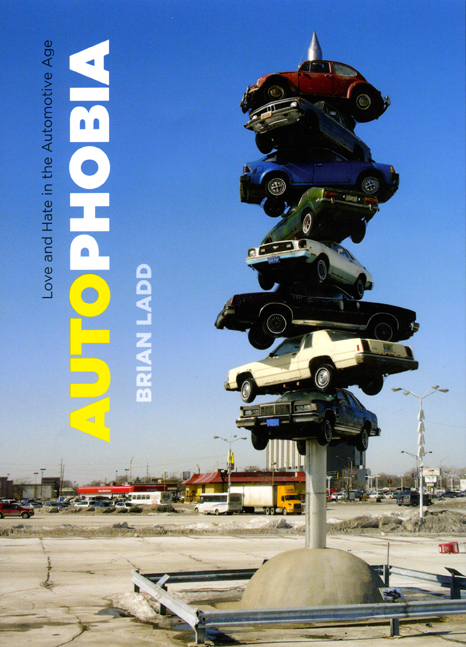Automobility—addiction or affliction?

I’ll be honest, I drive to work nearly every day. But every time I see a politician’s stump speech or an oil industry executive advocating the expansion of drilling into the Alaskan wilderness, or beneath the rapidly diminishing polar caps, I can’t help but cringe—simultaneously in outrage at what the long term environmental effects of such actions might be, and guilt for my own complicity. But according to Brian Ladd, author of Autophobia: Love and Hate in the Automotive Age I’m not alone. In fact, as the NYT‘s Tom Vanderbilt points out in the Sunday Book Review, Americans have had quite a conflicted relationship to the automobile almost since its very inception, and in his new book, Ladd gives some insightful reasons why:
[Recently] the car has certainly lost some of its luster, lending credence to the words of an English observer: “From being the plaything of society,” the car “has come to dominate society. It is now our tyrant, so that at last we have turned in revolt against it, and begun to protest against its arrogant ways.”
The only problem with this incipient revolt is that these words actually date to 1911, the shaky toddler years of American motorization. That they could have been uttered in 1973, or perhaps yesterday, is what animates Brian Ladd’s Autophobia. People have been predicting the death, or at least severe retrenchment, of the car virtually since its invention. But while the literature may be filled with books like Dead End, Car Trouble and Autokind vs. Mankind—among many others—the roads are filled with ever more traffic. The car, since it began, has seemingly been driven by Beckett: It can’t go on, it goes on.…
Throughout the car’s life, Ladd argues, its critics have often “failed to appreciate the depth of the automobile’s hold on ordinary people,” reaching for conspiracies to help explain the ubiquity of car culture when the answers seem far simpler. The car, beyond any symbolic power, is usually the fastest—if far from the healthiest—way to get around. But this itself contains a point that the car’s boosters, Ladd argues, often ignore—a so-called path dependence. Once you started to make room for the car in the landscape—doing things that made the car “an easy, convenient, even necessary, but not always wise choice”—it was hard to turn back.
Read the rest of the review on the New York Times website.
Also read this excerpt from the book and listen to an audio interview with the author.